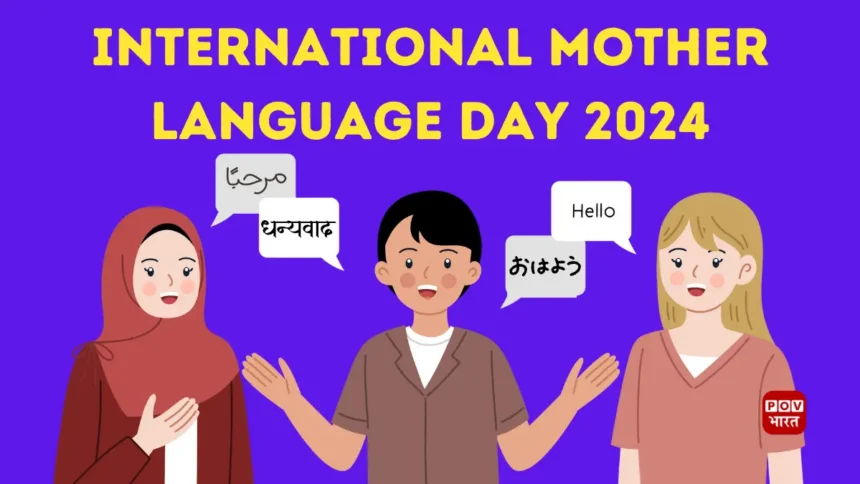Every year 21st February is celebrated as International Mother Language Day. Special occasion raises global awareness about the diversity of languages and promotes the preservation of mother tongues. In this article, we will explore the historical significance and ways to honor the important day.
History and Background of Mother Language Day:
The origin of this Mother Language Day was a tragic event in 1952 in Bangladesh. At that time, pakistan government declared the Urdu language as the sole official language of the nation. This sparked protests among bengali speaking students and activists who advocated for their mother tongue, Bengali.
On 21 February 1952, students and activists gathered at the University of Dhaka to protest against the language policy. The situation got out of control and police open fire on peaceful demonstrators, resulting in several deaths of innocent students. This event is known as the Bengali language movement.
Eventually leading to Bangladesh’s independence in 1971 with Bengali as the official language.
UNESCO recognised the sacrifices made in Bangladesh and proclaimed February 21st as International Mother Language Day in 1999. This day is celebrated annually to raise awareness about language diversity and the importance of preserving the mother tongue worldwide.
Importance of Language Diversity
According to UNESCO around 40% of the world population does not have the opportunity to receive education in their native language, Which can make it hard for them to learn develop critical thinking abilities and feel confident about themselves.
International Mother Language Day shows how important is it to provide education in different languages and make policies that support language diversity. Accepting the use of mother tongues can bring people together from different communities and it helps to create a peaceful society where everyone can live together without conflict as outlined in the United Nations’ Sustainable Development Goals (SDGs).
This year’s theme for International Mother Language Day 2024 is ‘Multilingual Education is a Pillar of Intergenerational Learning.
Global Celebrations and Initiatives
Worldwide countries organise various events and activities to celebrate this International Mother Language Day. In Bangladesh, people gather at the Shaheed Minar (Martyr’s Monument) to pay tribute to those who sacrificed their lives For language rights.
In this festival, multiple activities are performed such as cultural performances, literary competitions, alpona drawings on roads, festive meals, and patriotic songs.
UNESCO also hosts events and promotes initiatives to protect languages that are at risk of disappearing. The organization encourages the use of technology for multilingual learning, providing tools to record, preserve, and analyze languages that exist primarily in oral form. Primarily they use language learning apps, online resources and virtual communities that offer interactive ways to improve language skills.
Language Diversity in India
India stands as a shining example of language and cultural diversity. In India over 1,600 languages are spoken across the country. This includes major languages like Hindi, Bengali, Telugu, Marathi, and Tamil, as well as many regional languages spoken by local communities.
To promote language diversity in India, the Government has started projects like Bharatavani. This project aims to digitize content in all 22 scheduled languages and extend it to 234 recognized languages.
Such efforts help to protect India’s cultural heritage and ensure the continued growth and importance of its many languages.
People Also Read: Women Warriors: The untold stories of the women who fought for India’s independence
Promoting Mother Tongues in Daily Life :
You can play a major role in preserving and promoting your mother tongue by using it in daily life. Here are some actionable tips:
- Speak and Write: Make some extra effort to use your mother tongue more often, both in verbal and written communication.
- Teach Younger Generations: As every one of us has listened to great stories from elder members of the family, so this time Share your language with children and younger family members by reading, storytelling, and engaging them in conversations.
- Support Local Programs: Participate in or support local language programs, cultural centers, or community initiatives that promote language diversity. Search on Bookmyshow you will get lots of program recommendations.
- Learn and Appreciate: Take the time to learn more about the history, literature, and cultural significance of your mother tongue.
Conclusion
International Mother Language Day is a special day that reminds us about importance of languages. It started because of a tragic event in Bangladesh in 1952. Later, this day helped us understand that every language is important and should be protected.
By celebrating this day, we learn to respect different languages and the people who speak them. Governments and Communities celebrate this day to support regional and global languages so everyone can feel proud of their culture.
Let’s promise to use and cherish our own languages, teach them to others, and support the government and communitie’s efforts to keep them alive.
FAQ on International Mother Language Day:
-
When is International Mother Language Day celebrated?
International Mother Language Day is celebrated annually on February 21st.
-
Why was International Mother Language Day started?
It was started to raise awareness about language diversity and support using many languages. It honors the Bengali Language Movement when students in Bangladesh protested for their native tongue.
-
How many languages exist globally?
There are around 7,000 languages worldwide. Over 40% are endangered according to UNESCO.
-
What is the 2024 theme?
The theme for International Mother Language Day 2024 is ‘Multilingual Education is a Pillar of Intergenerational Learning
-
How can people celebrate this day?
By using native languages more, reading diverse literature, supporting linguistic diversity, and sharing traditions.
